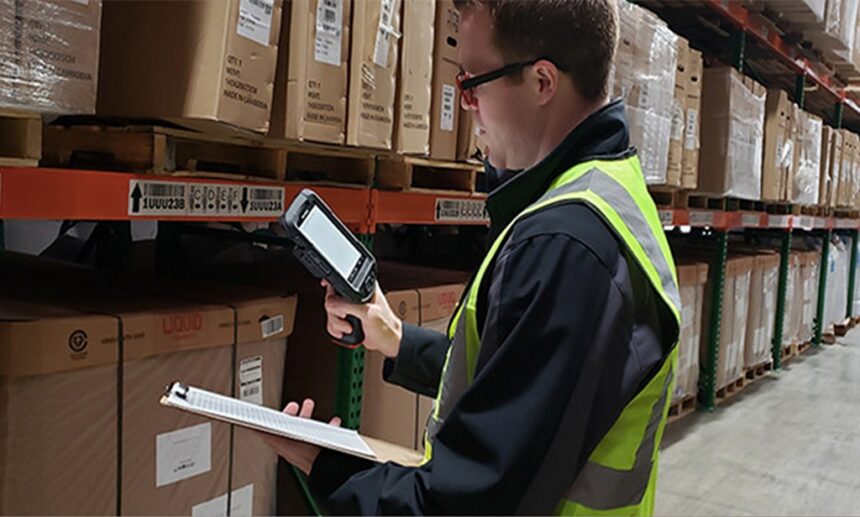If there’s one thing I’ve learned after years of working with fast-growing eCommerce brands, it’s this: inventory isn’t just stock on a shelf, it’s your business’s heartbeat. And yet, it’s often the most overlooked part of the operation.
That’s exactly why we built our human-led inventory management services at Vserve to help companies get control of their stock, stay agile during change, and build the kind of resilience that turns stress into stability.
Inventory management services aren’t just about avoiding stockouts. It’s about creating systems that adapt, teams that persist, and decisions that improve over time. In this article, we’ll answer the big question: Can inventory management services help businesses become more resilient and continuously improve? My answer is a clear yes, and I’ll walk you through why, with strategies I’ve seen work over and over again.
Why Inventory Management Is a Core to Resilience
The supply chain world changes fast, with delays, spikes in demand, supplier issues, and shipping costs; it’s never static. Your inventory system needs to be flexible without compromising stability. That’s where inventory management services step in. They help businesses avoid reactionary chaos and move toward calm, confident decision-making.
Here’s what that looks like:
- Monitoring stock levels in real-time
- Automating reorder points to avoid last-minute rushes
- Forecasting future demand with seasonality in mind
- Reducing overstock that ties up your capital
- Improving team coordination between sales, warehouse, and customer support
According to a survey by NetSuite, 43% of retailers say stock visibility is their biggest challenge. That’s a huge risk, especially when your product availability affects everything from customer satisfaction to cash flow.
Strategy 1: Build Flexibility into Your Inventory System
One key to resilience is flexibility. Inventory systems shouldn’t be rigid; they should adapt when something unexpected happens. That’s why we help our clients set up flexible reorder workflows that trigger alerts when sales spike or a supplier delay hits.
A few ways to bake in flexibility:
- Multi-location tracking so inventory can shift based on regional demand
- Backup supplier plans for critical SKUs
- Setting safety stock levels based on seasonal trends
- Creating rules to auto-reorder fast-moving items
One of our clients in the home appliance industry experienced significant delays with their overseas supplier. Because we had forecast reports and buffer stock set up in advance, they stayed afloat without cancelling a single order.
Strategy 2: Treat Mistakes as Metrics, Not Failures
A growth-minded business doesn’t avoid mistakes, it learn from them. That’s why we always tell clients: track what went wrong, not just what went right.
- Missed a reorder point?
- Logged an incorrect SKU?
- Shipped the wrong item?
These are goldmines for insight if you’re willing to document them. We help teams build a simple inventory error log, review it monthly, and take one step toward solving the root problem, not just the symptom.
Here’s what we track:
- Stockouts and their cause
- Overstock aging beyond 90 days
- Items returned due to fulfillment errors
- Manual overrides in your system
This level of review fosters persistence; you make improvements one at a time, rather than burning out by trying to fix everything at once.
Strategy 3: Blend Tech with Human Support
Technology helps, but it’s not enough on its own. AI-based forecasting tools can predict trends, but it takes human judgment to spot when something’s off. That’s why our approach at Vserve blends software and real people.
We use tools to:
- Generate reorder recommendations
- Flag low-performing SKUs
- Sync with Shopify, WooCommerce, Amazon, and warehouse systems
Then, our team:
- Reviews alerts manually
- Reaches out if trends seem off
- Provides advice on bundling, price adjustment, or SKU retirement
When you combine these, you get smarter decisions and, more importantly, continuous improvement that doesn’t rely on guesswork.
Strategy 4: Set Clear, Incremental Goals
We’ve worked with clients who wanted to “fix inventory once and for all,” but that’s not how it works. The better mindset is steady progress.
Here are a few goals we recommend:
- Improve stock accuracy from 93% to 97%
- Reduce inventory carrying costs by 15%
- Clear out 20% of dead stock within a quarter
- Shorten reorder time by 5 days
Inventory management services can track and report on all of this for you. At Vserve, we offer weekly dashboards, custom reporting, and one-on-one reviews to help our clients hit and surpass these goals.
Case Study: Fashion Retailer Bounces Back After a Stock Crisis
Let me share a story that’s stuck with me. A mid-sized fashion brand reached out to us after missing sales for three weeks straight due to poor stock visibility. Their bestsellers were sold out, their ads continued to run, and customers were cancelling orders.
Here’s what we did:
- Set up real-time inventory sync between Shopify and their 3PL
- Built a forecasting model based on past seasonal patterns
- Created auto-reorder triggers with supplier lead times built in
- Conducted weekly check-ins to catch issues before they grew
In just two months:
- Stockouts fell by 67%
- Revenue rose by 22%
- They grew from 1 warehouse to 3, with confidence
They now call inventory their “secret weapon.” That’s the power of blending persistence with strategy.
Frequently Asked Questions (FAQs)1. Do I need inventory management services if I only sell on one platform?
Yes. Even single-channel sellers benefit from automated tracking, accurate reporting, and reorder planning, especially as they scale.
2. How often should inventory be reviewed?
At a minimum, monthly. However, for fast-moving businesses, weekly reviews help identify stock issues early and enhance decision-making.
3. Will I lose control if I outsource inventory management services?
Not at all. You gain visibility, expert support, and insights that strengthen your internal team, not weaken it.
Key Takeaways
If you want to build a business that lasts, inventory management services aren’t a cost; they’re a catalyst. Here’s what to remember:
- Resilience comes from preparation. Forecasting, safety stock, and alerts protect you from chaos.
- Mistakes drive growth. Treat errors as lessons and build systems that prevent them from happening again.
- Persistence beats perfection. Small, consistent improvements lead to major wins.
At Vserve, we don’t just manage inventory; we help our clients build smarter operations with structure, support, and strategy. If you’re ready to level up your back-end and stop worrying about stock, let’s chat.
For more tips and behind-the-scenes inventory insights, follow Vserve on Facebook, Instagram, and LinkedIn.
Related News:
OpenAI Reaches 3 Million Paying Business Users and Launches New Features.














